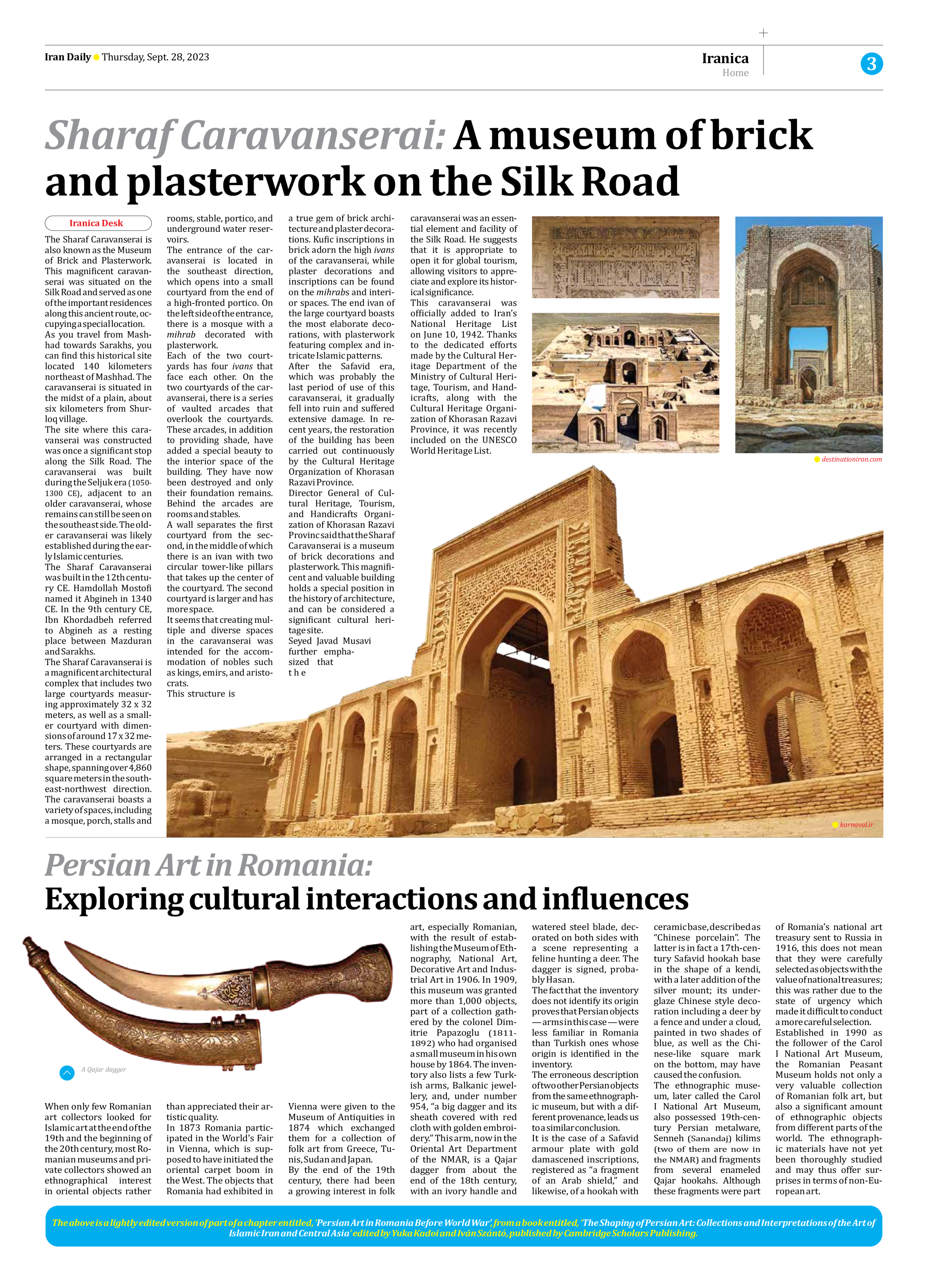
Sharaf Caravanserai: A museum of brick and plasterwork on the Silk Road
The Sharaf Caravanserai is also known as the Museum of Brick and Plasterwork. This magnificent caravanserai was situated on the Silk Road and served as one of the important residences along this ancient route, occupying a special location.
As you travel from Mashhad towards Sarakhs, you can find this historical site located 140 kilometers northeast of Mashhad. The caravanserai is situated in the midst of a plain, about six kilometers from Shurloq village.
The site where this caravanserai was constructed was once a significant stop along the Silk Road. The caravanserai was built during the Seljuk era (1050-1300 CE), adjacent to an older caravanserai, whose remains can still be seen on the southeast side. The older caravanserai was likely established during the early Islamic centuries.
The Sharaf Caravanserai was built in the 12th century CE. Hamdollah Mostofi named it Abgineh in 1340 CE. In the 9th century CE, Ibn Khordadbeh referred to Abgineh as a resting place between Mazduran and Sarakhs.
The Sharaf Caravanserai is a magnificent architectural complex that includes two large courtyards measuring approximately 32 x 32 meters, as well as a smaller courtyard with dimensions of around 17 x 32 meters. These courtyards are arranged in a rectangular shape, spanning over 4,860 square meters in the southeast-northwest direction. The caravanserai boasts a variety of spaces, including a mosque, porch, stalls and rooms, stable, portico, and underground water reservoirs.
The entrance of the caravanserai is located in the southeast direction, which opens into a small courtyard from the end of a high-fronted portico. On the left side of the entrance, there is a mosque with a mihrab decorated with plasterwork.
Each of the two courtyards has four ivans that face each other. On the two courtyards of the caravanserai, there is a series of vaulted arcades that overlook the courtyards. These arcades, in addition to providing shade, have added a special beauty to the interior space of the building. They have now been destroyed and only their foundation remains. Behind the arcades are rooms and stables.
A wall separates the first courtyard from the second, in the middle of which there is an ivan with two circular tower-like pillars that takes up the center of the courtyard. The second courtyard is larger and has more space.
It seems that creating multiple and diverse spaces in the caravanserai was intended for the accommodation of nobles such as kings, emirs, and aristocrats.
This structure is a true gem of brick architecture and plaster decorations. Kufic inscriptions in brick adorn the high ivans of the caravanserai, while plaster decorations and inscriptions can be found on the mihrabs and interior spaces. The end ivan of the large courtyard boasts the most elaborate decorations, with plasterwork featuring complex and intricate Islamic patterns.
After the Safavid era, which was probably the last period of use of this caravanserai, it gradually fell into ruin and suffered extensive damage. In recent years, the restoration of the building has been carried out continuously by the Cultural Heritage Organization of Khorasan Razavi Province.
Director General of Cultural Heritage, Tourism, and Handicrafts Organization of Khorasan Razavi Provinc said that the Sharaf Caravanserai is a museum of brick decorations and plasterwork. This magnificent and valuable building holds a special position in the history of architecture, and can be considered a significant cultural heritage site.
Seyed Javad Musavi further emphasized that the caravanserai was an essential element and facility of the Silk Road. He suggests that it is appropriate to open it for global tourism, allowing visitors to appreciate and explore its historical significance.
This caravanserai was officially added to Iran’s National Heritage List on June 10, 1942. Thanks to the dedicated efforts made by the Cultural Heritage Department of the Ministry of Cultural Heritage, Tourism, and Handicrafts, along with the Cultural Heritage Organization of Khorasan Razavi Province, it was recently included on the UNESCO World Heritage List.







